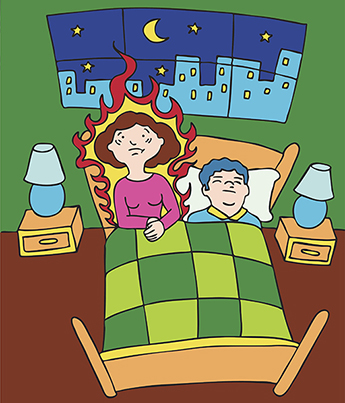1.1 The hot flush
The hot flush has become something of the butt of menopause jokes. You will find a wide range of hot flush merchandise available – cards, mugs, fridge magnets and even tote bags! And while it’s good to have a laugh hot flushes are no fun. They can be extremely unpleasant, causing discomfort and embarrassment in all sorts of settings: at work, out shopping, during exercise, at social gatherings, and at home when we are trying to relax and enjoy time with our partners and loved ones.
Hot flushes (or flashes) are the most common symptom of the menopause, with 3 out of 4 people affected (Newson, 2019). A hot flush is a sudden feeling of intense heat that spreads over the face, neck, chest and body. Most hot flushes last for seconds or up to 5 minutes (Kaye, 2020), and can be accompanied by sweating, dizziness and palpitations (Newson, 2019), as well as nausea (Kaye, 2020). For some people they happen a few times a day, while for others, they occur much more regularly, including during the night, when they can be accompanied by intense sweating and contribute to insomnia (Kaye, 2020). On average, menopausal hot flushes will persist for four years, but for some, they can last into their 60s or 70s (Newson, 2019).

